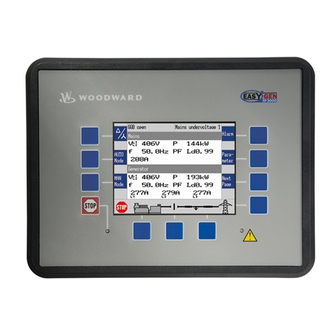
Woodward easYgen-3000 Series Manual
Genset control
Hide thumbs
Also See for easYgen-3000 Series:
- Manual (69 pages) ,
- Installation manual (67 pages) ,
- Operation (51 pages)

















Need help?
Do you have a question about the easYgen-3000 Series and is the answer not in the manual?
Questions and answers